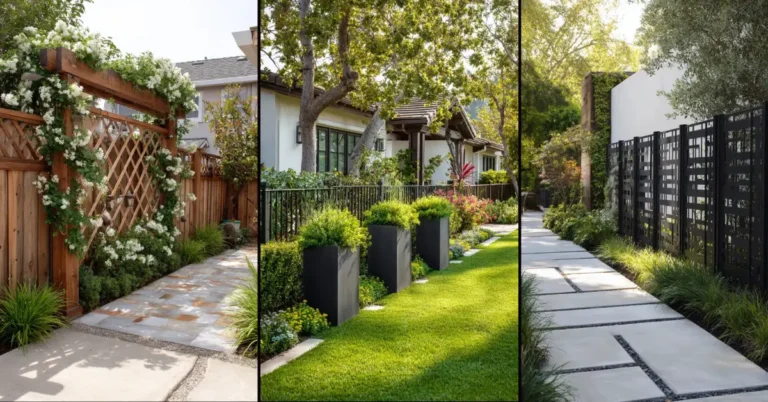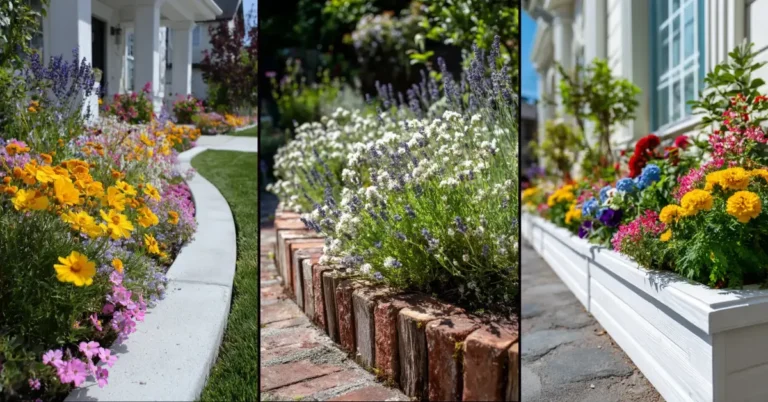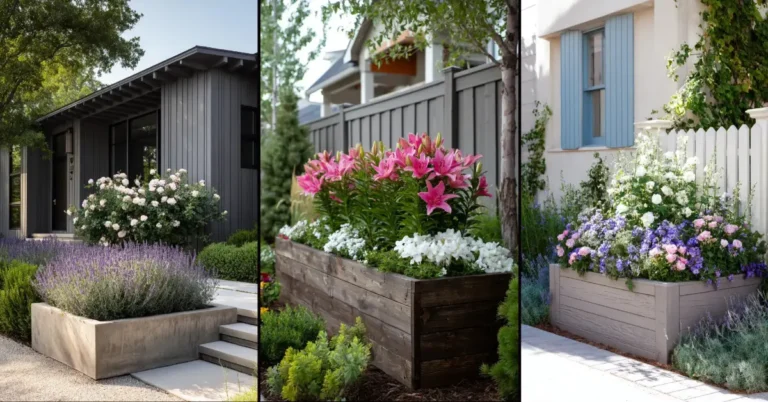How To Fill Raised Garden Beds? [Easy DIY guide]
When starting your own garden, filling raised beds the right way is important for healthy plant growth and saving money.
To fill a raised garden bed, you can use layers like logs, branches, leaves, grass clippings, kitchen scraps, and finish with a mix of soil and compost.
This method helps create rich, fertile soil while making use of yard waste and organic materials.
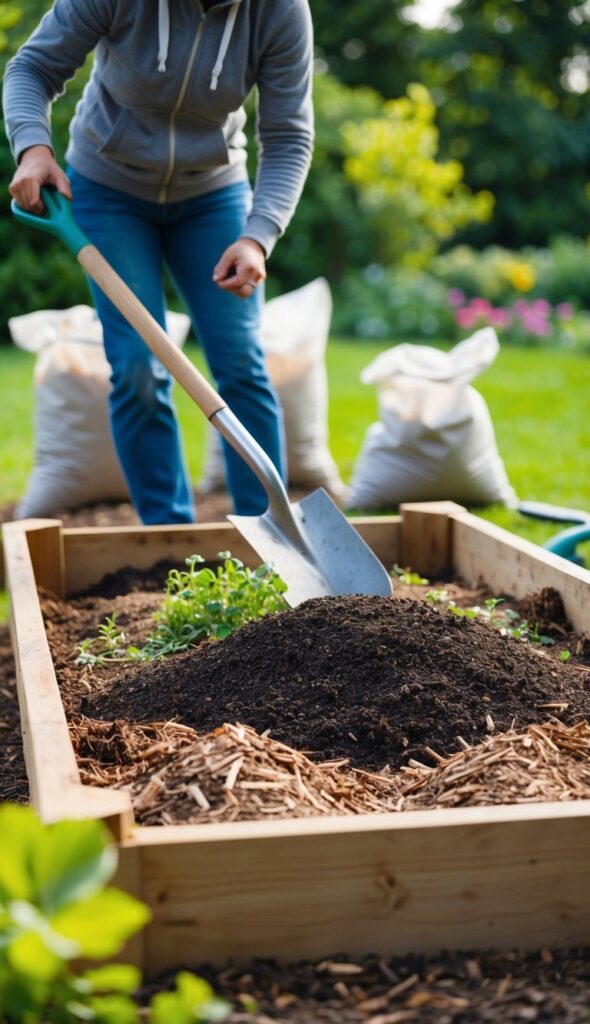
Using this layered approach builds a strong foundation for your plants and improves water drainage.
You may also benefit from cost savings by repurposing items you already have instead of buying only bagged soil.
For more details about what goes at the bottom of your bed, look at this guide on How To Fill Raised Garden Beds.
Preparing Raised Garden Beds
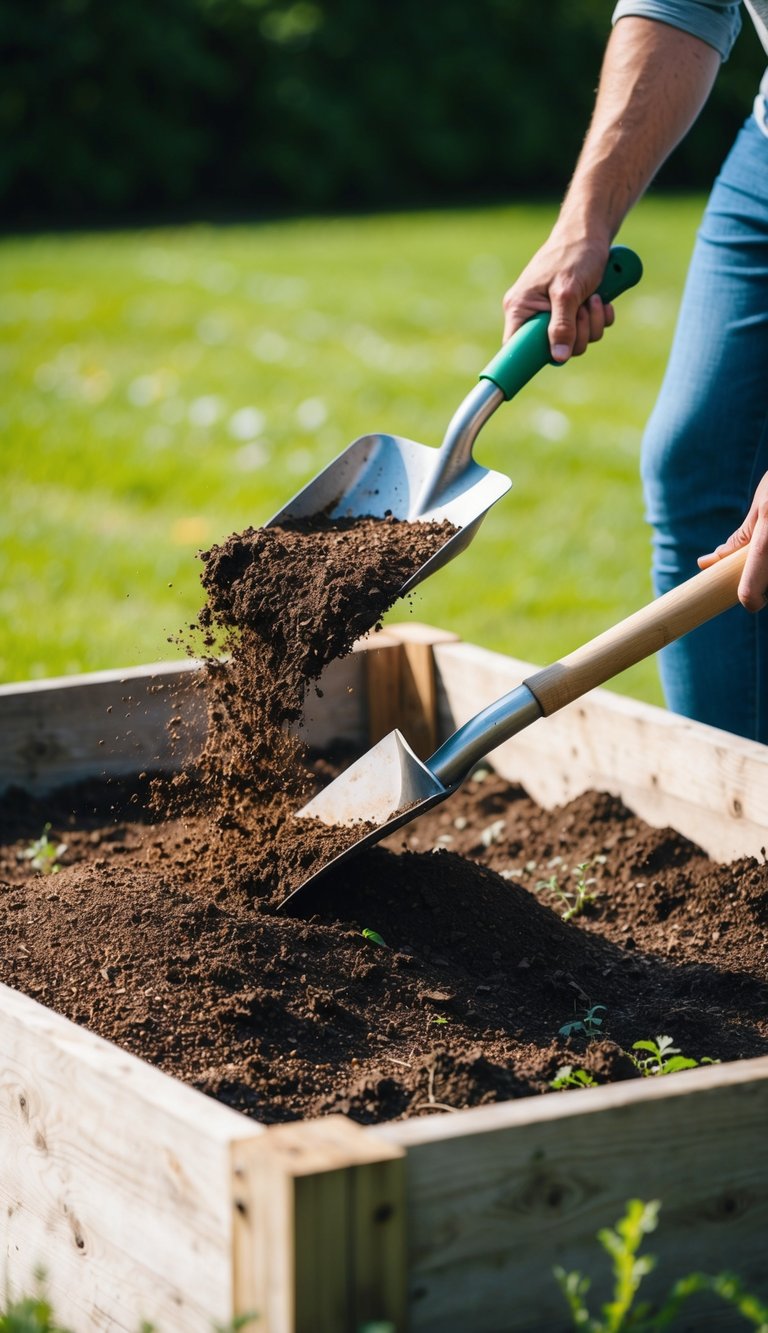
Proper preparation is essential to build healthy, productive raised beds.
Selecting a good spot, making the ground even, and building a steady frame will help plants grow better and prevent problems later.
Choosing the Right Location
Select a place that gets at least 6-8 hours of full sunlight each day, as most fruits and vegetables need this much to grow well.
Pick a spot away from tall trees and large shrubs because these can block light and compete for water and nutrients.
Check for good drainage.
Avoid low-lying spots where rainwater collects or pools.
Make sure the spot is easy for you to reach with a hose or watering can, and that you can get garden tools to the bed without trouble.
Consider the surroundings.
If you live in a windy area, place the bed where a fence or building can offer some protection, so your plants do not get damaged or dried out too quickly.
Choose a level spot, or be ready to level it before building.
Clearing and Leveling the Area
Remove all grass, weeds, and rocks from the place where you want your raised bed.
Use a shovel or hoe to dig out plants and roots, so they do not grow back through your garden bed.
Rake the soil to make the area flat and even.
This helps stop water from pooling under your raised bed, which can cause rot or make it hard for plants to grow.
A level base keeps the bed steady and helps water drain evenly.
If your soil is especially hard or compacted, loosen it a little with a garden fork.
This gives better drainage and can help roots grow down through your raised bed into the soil below.
Assembling the Raised Bed Structure
Gather all your building materials before you start.
Common choices include untreated wood, metal, or brick, but untreated wood is often preferred as it is easy to handle and safe for food gardens.
Lay out the pieces flat on the ground and fit them together tightly so that no gaps remain where soil could leak out.
Fasten the corners with screws or sturdy brackets to keep the box square and solid.
Use a level to make sure the frame is even on all sides.
Once built, place the structure carefully on the cleared and leveled ground.
Press down gently so it sits steady without rocking.
Now your raised bed is ready for the next steps: lining if needed and adding the base layers before you fill it with soil.
Selecting and Layering Materials

Proper soil composition and layering help support plant growth, prevent drainage problems, and improve nutrient access.
Using the right materials in the right order helps your garden beds work efficiently during each growing season.
Choosing Soil and Compost
You need a balanced blend of materials for your raised bed to grow healthy plants.
High-quality topsoil should make up the bulk of the bed, but do not rely on topsoil alone.
Mixing in compost is essential.
Compost boosts nutrients and helps soil retain moisture.
Aim for a mix that is roughly half topsoil and half compost by volume.
If possible, use several types of compost such as plant-based, leaf, or mushroom to supply a range of nutrients.
Including organic matter between 25% and 50% by volume is recommended.
If you are filling a deep bed, consider saving on quality soil by adding inexpensive organic materials at the bottom, such as leaves or woody debris, which will break down over time and add nutrients from below.
Arranging Drainage Layers
Raised beds need good drainage to avoid root rot and waterlogging.
You do not need rocks or gravel at the bottom.
Instead, use layers of coarse materials such as sticks, small branches, or wood chips in the very bottom few inches.
This layer allows excess water to drain.
On top of the coarse material, add a layer of cardboard or newspaper to stop weeds from growing up through the bed.
This layer will break down eventually and allow roots to reach deep.
Avoid materials that might stay soggy or block drainage, like plastic sheeting.
Arrange each layer smoothly so water moves downward without collecting.
Incorporating Mulch and Amendments
Mulch helps keep the soil surface moist and lowers weed growth.
After planting, cover the top layer of soil with two to three inches of rough mulch, like wood chips, straw, or shredded leaves.
These materials break down slowly and feed soil microbes over time.
Soil amendments like worm castings, bone meal, or powdered rock minerals can be mixed into the upper layers to supply extra nutrients as needed.
Apply amendments based on the known needs of the crops being grown, but do not overdo it, as too much can harm plant health.
A list of common mulches:
- Shredded bark
- Straw
- Composted leaves
Optimizing Soil Structure
Soil structure affects water retention, drainage, and root development.
The mix you use should be loose and crumbly, not dense or sticky.
You can check this by grabbing a handful and seeing if it breaks apart easily.
If your soil is heavy clay or pure sand, add organic matter such as compost and aged manure to improve texture.
Materials like coconut coir or peat moss can also boost moisture retention if needed, but use these sparingly.
Periodically check your soil for compaction and aerate gently with a fork if it becomes dense.
Aim for a structure where roots can travel easily for nutrients and water.
Planting and Maintenance Guidelines

To grow healthy plants and maintain productive raised beds, you need the right planting techniques, efficient watering and feeding, and regular seasonal upkeep.
Each step helps your garden stay strong throughout the year.
Planting Strategies for Raised Beds
Using a raised bed gives you the chance to plant in denser patterns, making full use of space.
You should try methods like square foot gardening or tight row planting to increase harvests while reducing weed growth.
Keep taller plants on the north side so they do not shade smaller crops.
Choose crops that match your climate and season.
Rotate crop families each year to help prevent soil diseases.
Raised beds warm up quickly in spring, which means you may be able to plant earlier than in traditional garden beds.
Succession planting is helpful—plant new seeds as soon as you harvest a crop.
Use a planting schedule to keep track of what you have and when you will need to plant again.
Companion plants such as basil with tomatoes can make use of space and may improve plant health.
Watering and Fertilizing Methods
Raised beds can dry out faster than ground-level gardens.
You need to check soil moisture often, especially in hot or windy weather.
Water deeply to encourage roots to grow down, but make sure the bed drains well so plants do not get soggy roots.
Consider using a drip irrigation system or soaker hoses for even water coverage.
Water at the base of plants in the morning to reduce leaf disease.
Mulch, like straw or shredded leaves, helps keep moisture in and stops weeds from growing.
For nutrients, apply compost or a balanced organic fertilizer at planting time.
Mid-season, give heavy feeders such as tomatoes and corn an extra boost.
Keep a regular fertilizing schedule for best results, but do not overfeed, as this can harm plants.
Seasonal Care and Soil Renewal
Every season brings its own maintenance tasks.
In early spring, check that your beds are topped up with fresh soil and compost, and remove any weeds.
In summer, trim plants if they get too crowded and keep an eye out for pests.
After your last harvest, clear out dead plants and spread a layer of compost or well-rotted manure.
Consider planting cover crops like clover or winter rye to protect your soil and add nutrients during winter.
This organic matter can be turned into the bed before planting in spring.
Over time, raised beds lose soil as organic matter breaks down.
Plan to top them off each year with a mix of high-quality compost and topsoil to keep your beds productive and healthy.
Rotate crops yearly and add plenty of mulch to maintain soil structure.

